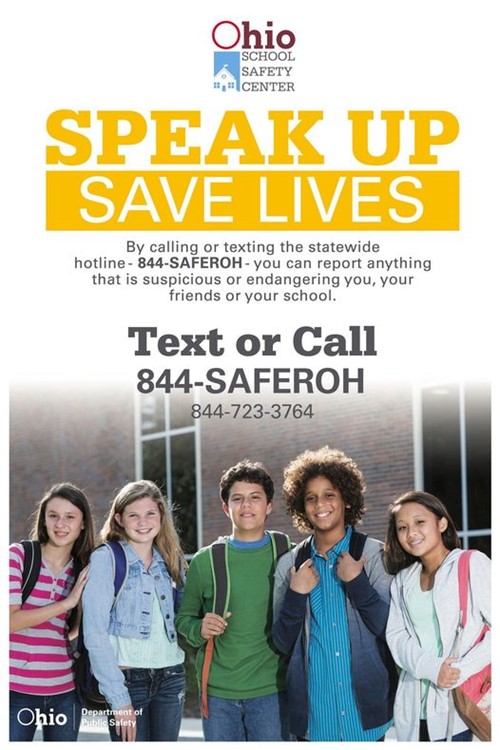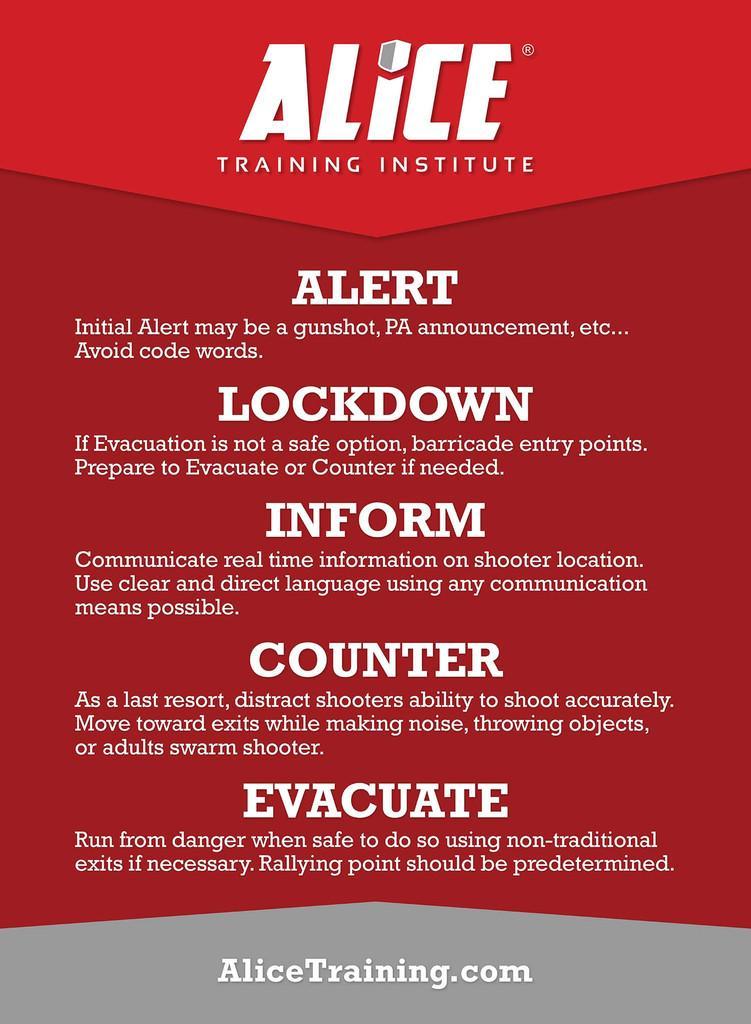

At Three Rivers Local School District, all staff and students are trained on ALICE.
ALICE Acronym
A - Alert
Alert is your first notification of danger.
ALERT is when you first become aware of a threat. The sooner you understand that you’re in danger, the sooner you can save yourself. A speedy response is critical. Seconds count.
Alert is overcoming denial, recognizing the signs of danger and receiving notifications about the danger from others. Alerts should be accepted, taken seriously, and should help you make survival decisions based on your circumstances.
L - Lockdown
Barricade the room. Prepare to EVACUATE or COUNTER if needed.
If EVACUATION is not a safe option, barricade entry points into your room in an effort to create a semi-secure starting point.
Our training explains scenarios where Lockdown may be the preferable option and dispels myths about passive, traditional ‘lockdown only’ procedures that create readily identifiable targets and makes a shooter’s mission easier. ALICE trainers instruct on practical techniques for how to better barricade a room, what to do with mobile and electronic devices, how and when to communicate with police, and how to use your time in lockdown to prepare to use other strategies (i.e. Counter or Evacuate) that might come into play should the active shooter gain entry.
I - Inform
Communicate the violent intruder’s location and direction in real time.
The purpose of INFORM is to continue to communicate information in as real time as possible, if it is safe to do so. Armed intruder situations are unpredictable and evolve quickly, which means that ongoing, real time information is key to making effective survival decisions. Information should always be clear, direct and in plain language, not using codes. If the shooter is known to be in an isolated section of a building, occupants in other wards can safely evacuate while those in direct danger can perform enhanced lockdown and prepare to counter.
Video surveillance, 911 calls and PA announcements are just a few of the channels that may be used by employees, safety officers, and other personnel to inform others. An emergency response plan should have clear methods outlined for informing school employees, hospital workers, or any other employees of the location of a violent intruder.
C - Counter
Create Noise, Movement, Distance and Distraction with the intent of reducing the shooter’s ability to shoot accurately. Counter is NOT fighting.
ALICE Training does not believe that actively confronting a violent intruder is the best method for ensuring the safety of those involved. Counter is a strategy of last resort. Counter focuses on actions that create noise, movement, distance and distraction with the intent of reducing the shooter’s ability to shoot accurately. Creating a dynamic environment decreases the shooter’s chance of hitting a target and can provide the precious seconds needed in order to evacuate.
E - Evacuate
When safe to do so, remove yourself from the danger zone.
ALICE provides techniques for safer and more strategic evacuations. Evacuating to a safe area takes people out of harm’s way and hopefully prevents civilians from having to come into any contact with the shooter.
Did you know that you should break a window from the top corner as opposed to the center? Many useful techniques that civilians do not know exist and can save your life. ALICE trainers teach strategies for evacuating through windows, from higher floors and under extreme duress.
Safety Team
Steve Makin - School Security Officer - smakin@trlsd.org
Laurie Bello - lbello@trlsd.org
Nate Cole - ncole@trlsd.org
James Holland - jholland@trlsd.org



